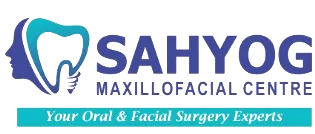Introduction
In the rapidly evolving world of dentistry, technological advancements have revolutionized the way dental professionals approach complex procedures. Dental navigation in computer-guided implantology has emerged as a game-changer among these advancements, allowing dental implant placement with unmatched precision and accuracy.
At Sahyog Maxillofacial Centre in Thane, Dr. Navitech, a visionary dentist, has embraced this revolutionary technology, raising the bar for dental care and ensuring the highest level of accuracy in implantology.
Understanding Dental Navigation in Implantology
Dental navigation is an advanced technique that gives dentists a precise and in-depth understanding of a patient’s oral anatomy through the use of real-time imaging and computer-assisted design (CAD). With the use of this technology, dentists can plan and carry out dental implant surgeries with remarkable accuracy. Dental navigators can use real-time images of a patient’s jawbone, nerves, and surrounding tissues to make accurate recommendations about the implantation procedure.
Importance of Precision in Dental Implant Procedures
Precision is of utmost importance in dental implantology. The accurate placement of dental implants is crucial for ensuring the longevity and success of the procedure. Proper positioning of implants not only guarantees optimal functionality but also plays a significant role in achieving natural aesthetics, ensuring that the dental implant blends seamlessly with the patient’s existing teeth.
Advantages of Computer Guided Techniques
The integration of dental navigation with computer-guided implantology offers several advantages over traditional implant placement methods. Some key benefits include:
1. Enhanced Accuracy: Dental navigation provides real-time feedback, enabling dentists to adjust implant placement during the procedure for the most precise results.
2. Minimized Risks: With detailed 3D imaging, dentists can identify potential risks, such as proximity to nerves or sinuses, before performing the surgery, reducing the risk of complications.
3. Predictable Outcomes: Computer-guided implantology allows for meticulous planning and simulation, leading to more predictable treatment outcomes and increased patient satisfaction.
4. Less Invasive: The precise nature of computer-guided implantology often leads to smaller incisions, resulting in less post-operative discomfort and faster healing times.
5. Shorter Treatment Time: With dental navigation and computer guidance, the implant placement process is streamlined, reducing the overall treatment time.
Navigation the Process: Step-by-Step Guide
The process of using computer-guided implants at Sahyog Clinic is meticulous and tailored to each patient’s unique needs. It begins with a comprehensive evaluation, utilizing state-of-the-art 3D imaging to assess the patient’s bone density and oral anatomy. This information is then imported into the computer software, allowing for precise implant planning. The virtual treatment plan guides the doctor’s hands during surgery, ensuring accurate implant placement and optimal prosthetic outcomes.
Addressing Challenges and Limitations
While dental navigation in computer-guided implantology offers numerous benefits, it is essential to acknowledge potential challenges and limitations. Factors such as cost, accessibility of technology, and the learning curve for dental professionals can pose obstacles to widespread adoption. However, as technology becomes more prevalent and training becomes more accessible, these challenges are expected to diminish.
Realizing the Benefits: Patient Perspectivies
Patients who have undergone computer-guided implant procedures often express high levels of satisfaction with the process and the results. The increased accuracy and predictability lead to successful outcomes reduced postoperative discomfort, and quicker recovery times. Moreover, the natural appearance and functionality of dental implants contribute to a boost in patients’ self-confidence and overall quality of life.


Conclusion
Dental navigation in computer-guided implantology represents a significant advancement in modern dentistry. For patients seeking dental implant procedures, exploring dental clinics equipped with dental navigation technology can be the key to unlocking a smile that looks and feels both natural and functional.

